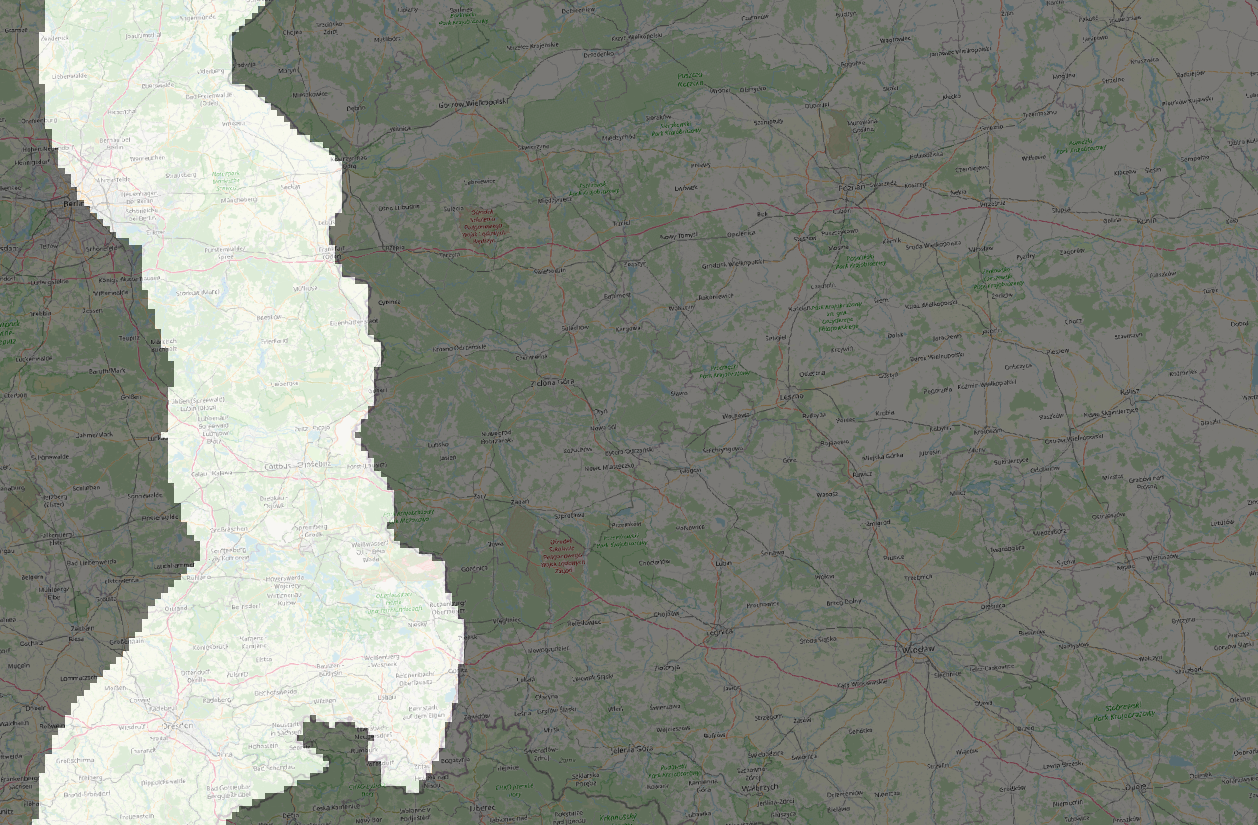 Left: Area of concern left from Polish border
Left: Area of concern left from Polish borderLeft-down: Current epidemic status - blue: healthy; red: infected/infectious; green: survived animals (brightness expresses numbers)
Below: First variant type (colour) affecting the family group. New variants form spatial clusters while spreading into the teritorry.